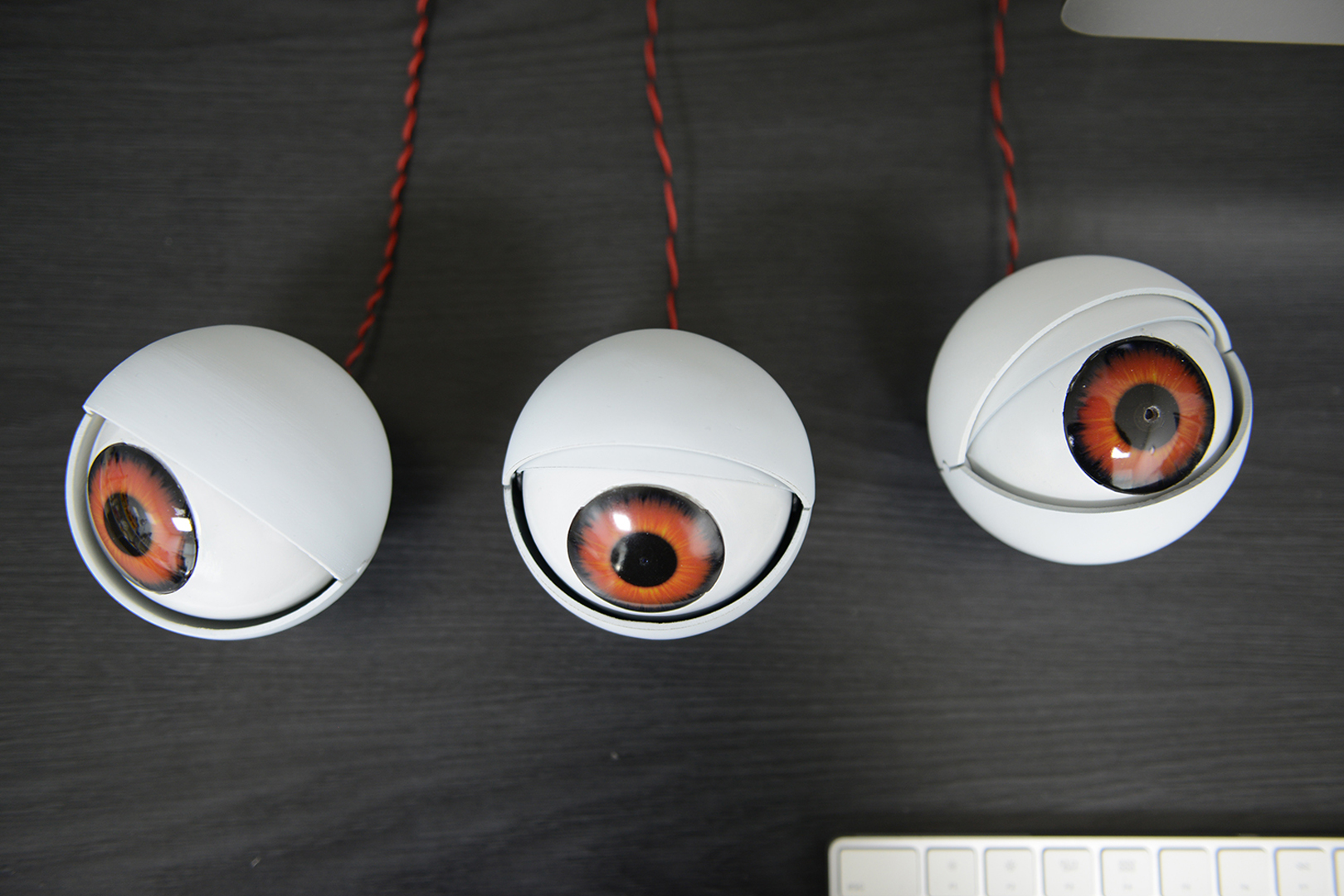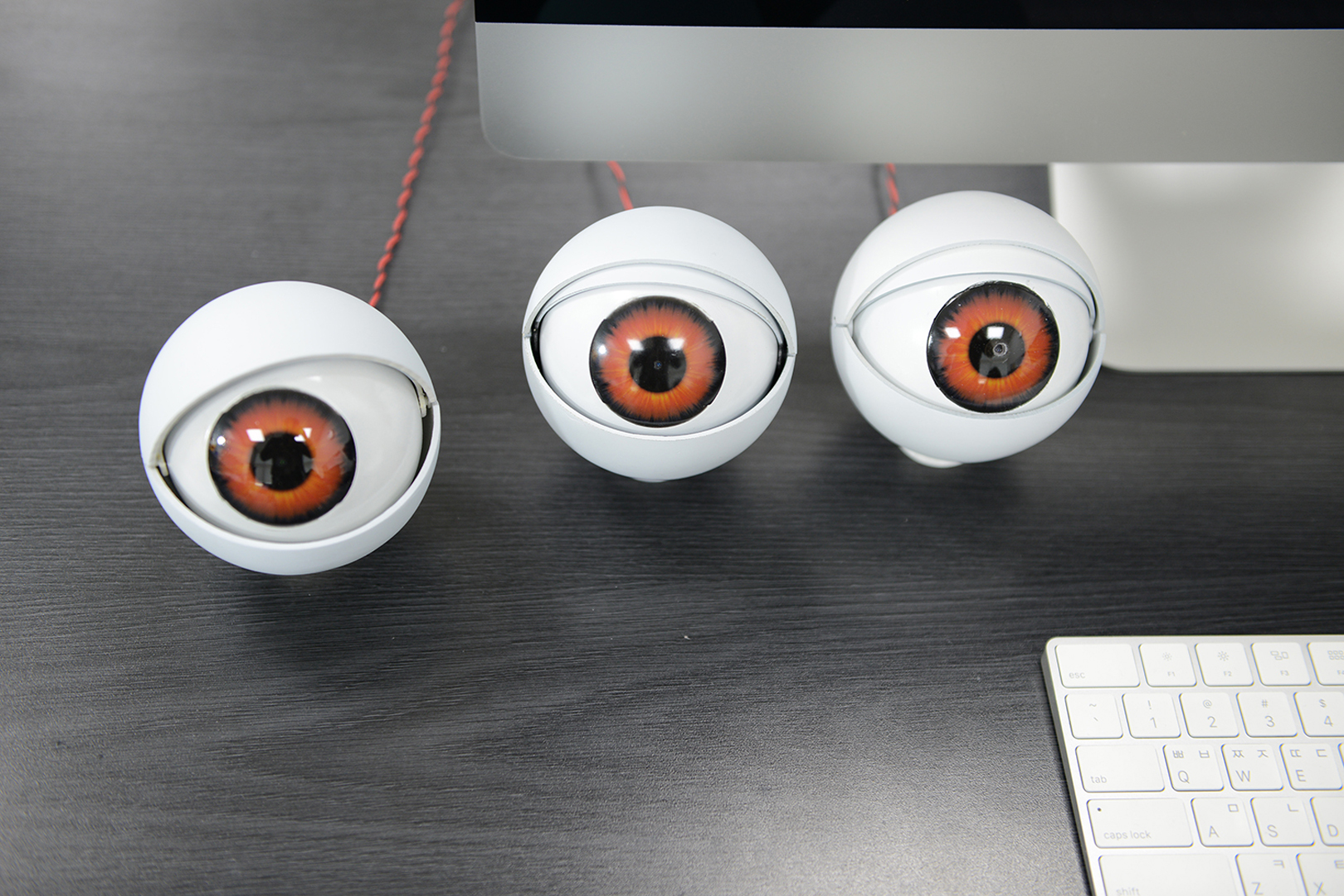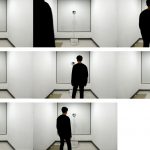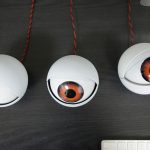Taeil Lee: Kam
Artist(s):
Title:
- Kam
Exhibition:
- SIGGRAPH Asia 2020: Untitled & Untied
-
More artworks from SIGGRAPH Asia 2020:


Category:
Artist Statement:
Summary
Kam tries to twist our familiarity with ubiquitous cameras surrounded us by its look of human eyeball and its behavior of following you and imitating your blinks. It exposes itself by reacting to us, otherwise barely recognizable. It makes us conscious to it and realize our own bodily existence.
Abstract
Eyes are everywhere. Cheap and accessible technology products with high-resolution imaging capacity are in every corner of our surroundings to surveil us. They watch us, record us, and even recognize us. These artificial gazes became so ubiquitous and so familiar to us that we are not even aware of them in everyday lives. Meanwhile, human senses interact with each other and transfer from one to another. We hear vibrations, feel textures by seeing, smell tastes, taste tactility, and so on. We feel the movement only by seeing stopped escalator. Our vision translates the visual information to activate the motor sensation embedded to somewhere in the body. Kam tries to twist the one’s familiarity by the phenomenon of the other. The eyeball-shaped camera follows you and imitates your blinks. The unfamiliar and unexpected behavior of this robotic camera gives lively feel to it and, at the same time, becomes eerie and unreal. It also makes you realize your sensation of blink when you find yourself trying to make it blink. Even its mechanical sounds seem to make you feel your blink physically. Kam utilizes the face recognition algorithms to see one layer deeper onto our facial expression. It exposes itself by reacting to the expression, when we would not even aware of it otherwise. It makes us pay conscious attention to it and realize our own bodily existence. Kam intended this trivial daily happening to become a meaningful experience.
Technical Information:
When setting up, at least 1 SSID for wireless network is required. A laptop computer should be set up near the units to exchange data. Units and the laptop computer should all be connected to network wirelessly. After setup, 1 or more Kam unit(s) automatically run when connected to the power source. The computer program should be manually run whenever it’s rebooted.
Process Information:
I prefer working within the area of Physical Computing which dwells upon how to push computing to more physical representations. So, I have to deal with hardware and software at the same time. As a designer, I usually work with open source platforms, which limit my ability to actualize the concept and leave a lot to struggle with. I am interested in taking a different view to our everyday artifacts by adding interactivity to them. I try to find ways to create alternative experiences by doing it. Recently, I become interested in human senses about how they work and how they transfer from on to another, so as to amplify our sensory experiences. Kam is one of the ideas that I came up with while I was studying about sensory phenomena of “broken escalator”. Kam tries to tell a tiny story about how the computer vision algorithm with mechanical movements can twist our daily experience. It illustrates how the algorithm can affect the familiarity of everyday lives by giving a strange twist. I believe that the technological future ahead may also be filled with trivial things and trivial experiences as such.
Since I came up with this idea of “exaggerated eyeball blinks back” almost 2 years ago, I have been trying variations of the idea. I started up with a projected screen animation of huge eyeball, moved on to more robotic installations with a 40-cm dimeter eyeball-which was presented in SIGGRAPH 2019-, and now smaller scale eyeball in daily settings. This series of works are similar in terms of their resulting effects and experiences, and at the same time, quite different in terms of the scales and how audiences’ reactions to each installation.
Other Information:
Inspiration Behind the Project
When we come across a broken escalator and walk up the stairs of it, we feel physically accelerated at first step. This is called “broken escalator effect” which is caused by our bodily or sensory mechanisms bringing up the sensation to prepare for the stair steps. It is quite interesting to see how our visual sensation relates to other senses, and how sensory mechanisms work to react to the surroundings.
Taken this as a starting point, I have explored the ways to transfer and/or convert our visual sensation to other senses until I came up with this idea of having exaggerated blinking eyeball imitates my blinks. The concept is two folds. One, the exaggeration of very sensitive body part could stimulate the sensory reaction, and two, the behavior of blinking reaction could enable us to realize our bodily sensation by making us to engage more in interacting with the actions.
Kam has another aspect with its scale and context of webcam or CCTV. These kinds of cameras are ubiquitous nowadays. They try to hide themselves and surveil us every moments of our daily lives. By exposing it with human-like eyeball and reacting to our blinks, it makes us conscious to it and realize our bodily existence.







